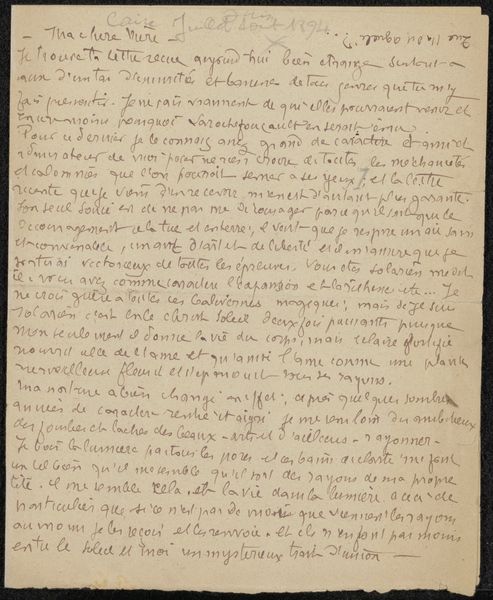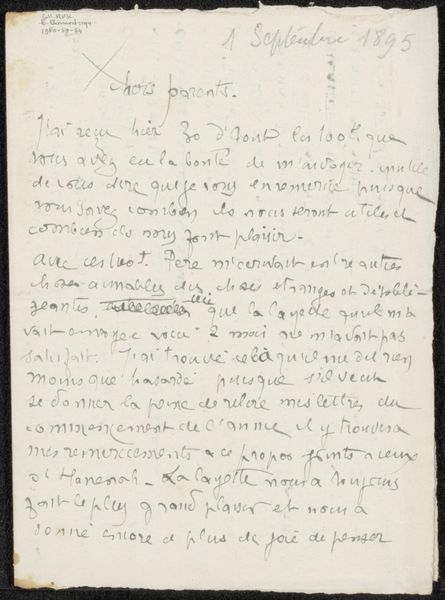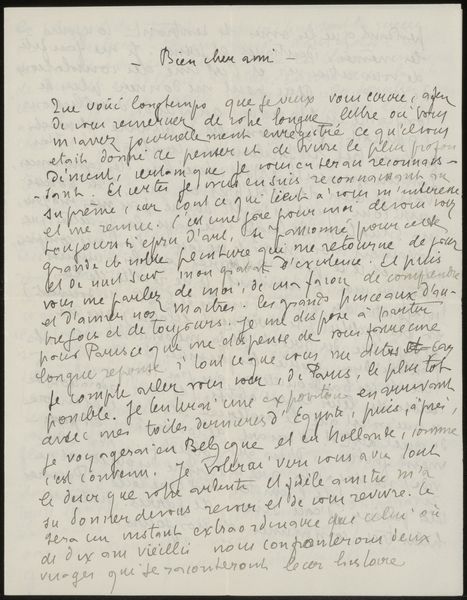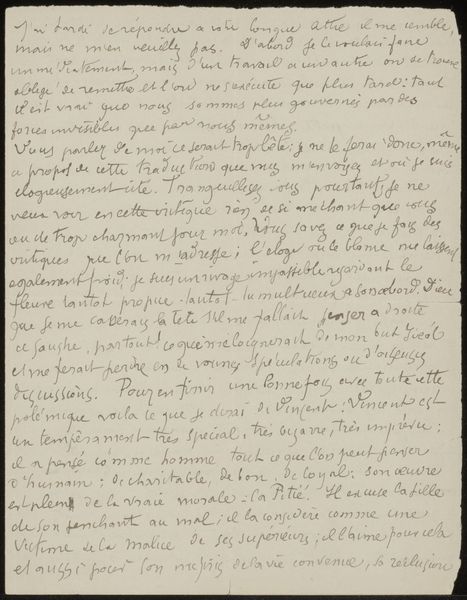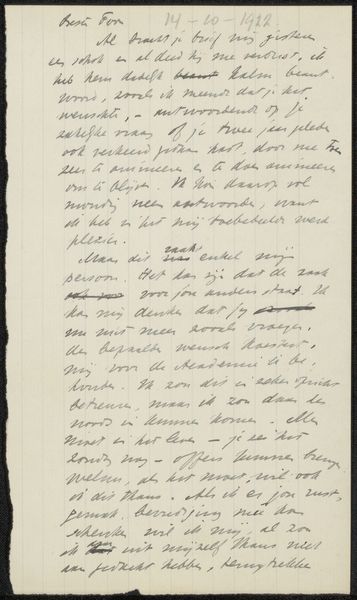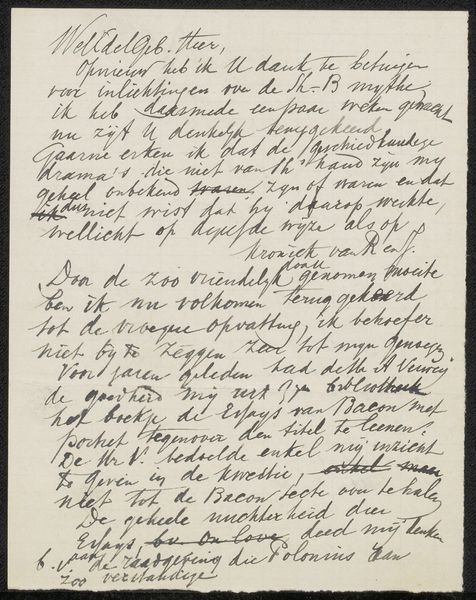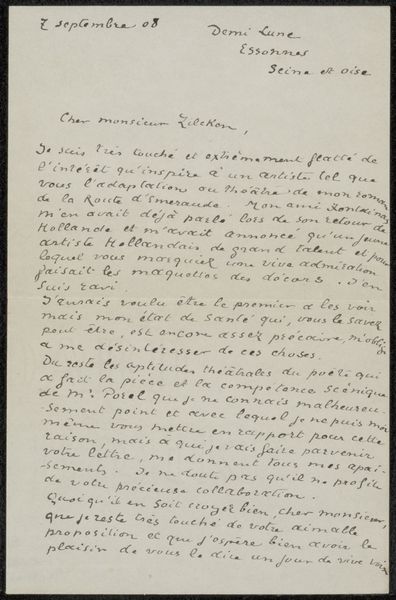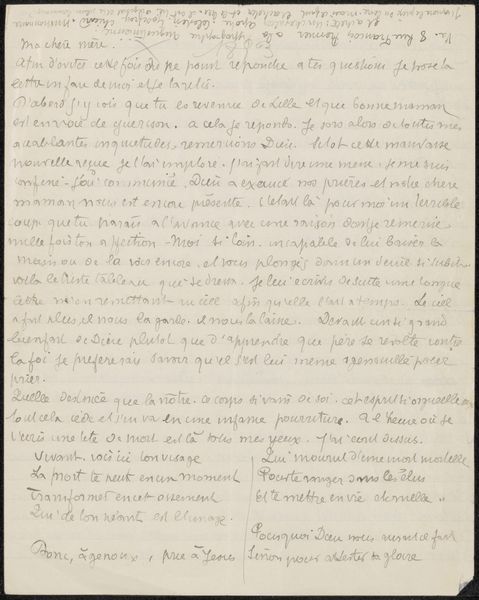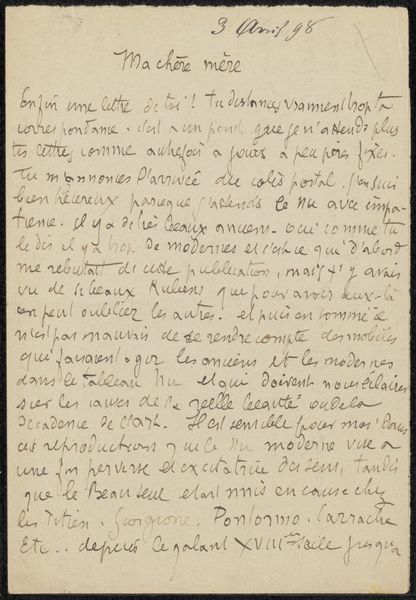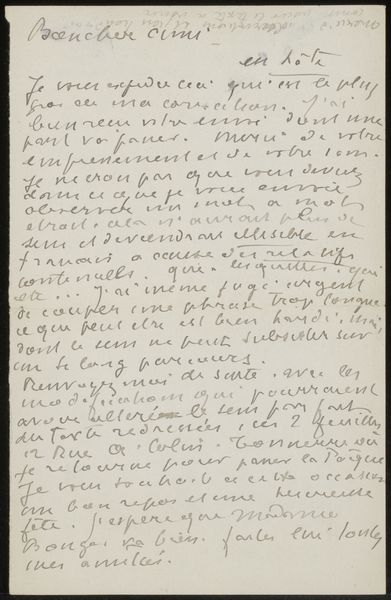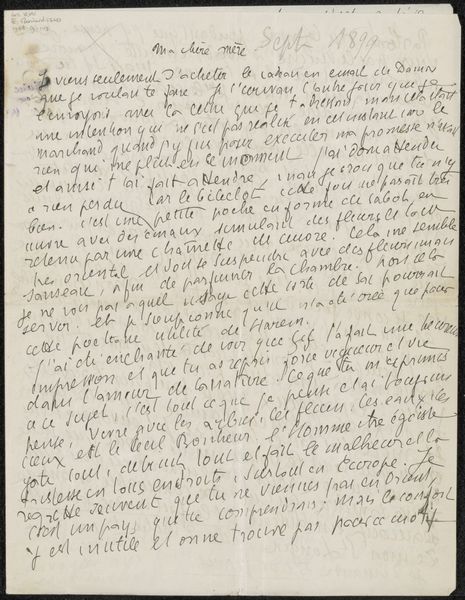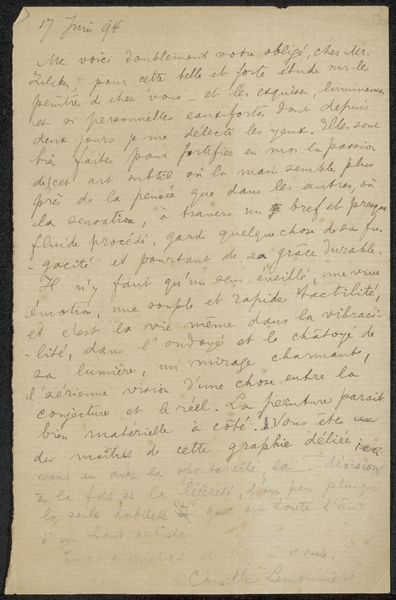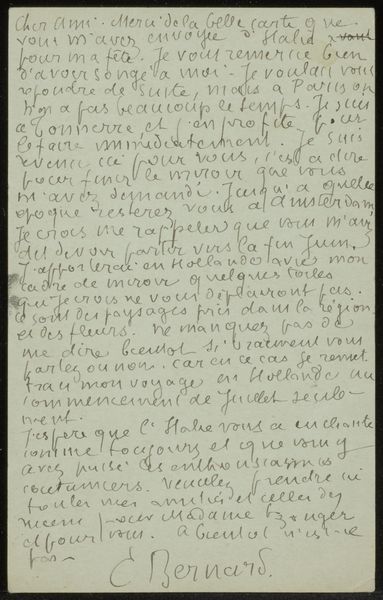
drawing, paper, ink, pen
#
drawing
#
hand-lettering
#
ink paper printed
#
hand drawn type
#
hand lettering
#
paper
#
personal sketchbook
#
ink
#
hand-drawn typeface
#
intimism
#
ink colored
#
pen work
#
sketchbook drawing
#
pen
#
sketchbook art
Copyright: Rijks Museum: Open Domain
Curator: Let's delve into this drawing by Émile Bernard. It's titled "Brief aan Andries Bonger" and is thought to pre-date 1929. It seems to be made with ink on paper. Editor: It certainly does have the quality of a quick sketch. It feels immediate and personal, with all those handwritten words crowding the page. The texture of the paper seems quite rough, too. Curator: Absolutely. This isn't a formal artwork in the traditional sense; it's a letter, a direct form of communication rendered with pen and ink. We're looking at not just the visual form, but also its social purpose – a message intended for a specific recipient. It shows the role that art played within his personal life. Editor: Yes, and it challenges our understanding of "art" by integrating something quotidian. Was this made to be observed as an art object, or did its existence begin and end with the exchange of information and thoughts? I am also intrigued by the density of text, its material presence creating an interesting tension with the assumed fragility of a written note. Curator: Exactly. Its aesthetic lies in that intimacy and the hand-drawn type. It points to a broader context—how the means of distributing such a message affect the construction of our understanding. One wonders, for example, whether the intended receiver of the "brief" treated it as art? Editor: It’s fascinating to consider how cultural value can change across generations. We're here observing this item now in a museum-like context. We, the public, can consider its effect in shaping and influencing perceptions, just through that recontextualization alone. Curator: This piece provides a crucial, tactile reminder of art's connection to labor. The careful construction of the lettering, even in its informality, is really interesting and deserves further thought. Editor: I agree. Examining “Brief aan Andries Bonger,” its initial function now eclipsed by its symbolic weight, really underscores how historical, material contexts can dramatically shift an artwork's meaning over time.
Comments
No comments
Be the first to comment and join the conversation on the ultimate creative platform.

